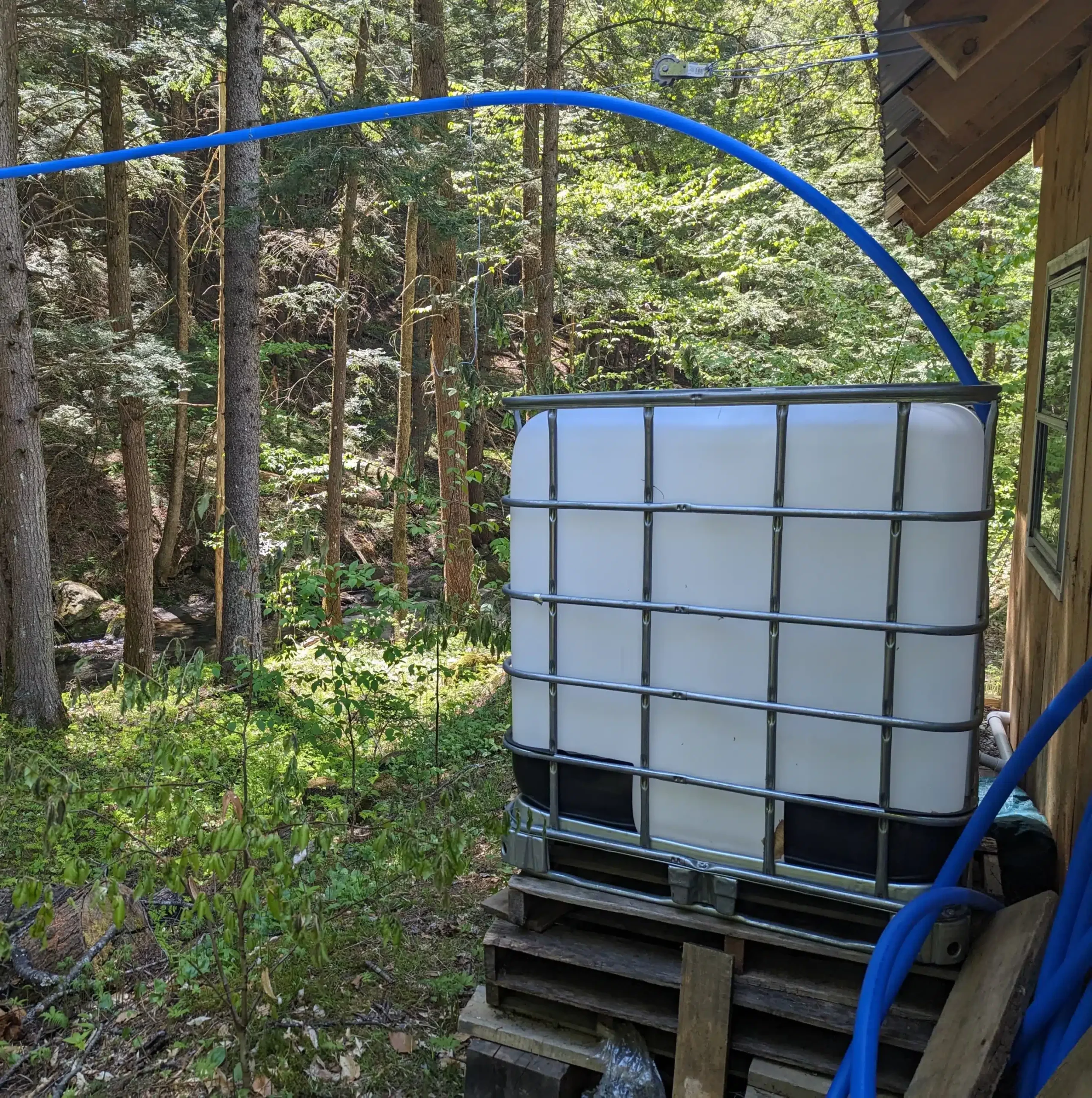Last year was our second season sugaring with lines. We mapped our sugar woods for the first time, ran lines for the first time, and didn’t have to collect sap from buckets for the first time! Oh, glory. On our Mini-Sportman Evaporator, we made 20 gallons of 100% pure maple syrup from exactly 100 sugar maple trees over the course of about a 6 week season! Before we moved on to eating it and giving it all away, it was time for pulling taps and flushing lines. But how? Here’s what we discovered our first time around. (And by “we,” I mean Justin McCabe, inventor of the Sapling Evaporator.)
Kate: Justin, tell me about your end of season clean up. When did you pull taps and flush lines?
Justin: I pulled taps mid-April just a few days after our maple syrup season ended. I simply pulled the plastic taps out of each tree and cut a bit off the drop line just below the tap. Then, I connected the open end of the drop line to the extra prong on the T-plug. When I got home, I put the taps in a pot, filled it with water, and heated it to a boil. This made it easier for me to pull the bit of line off the tap. Also, I used a pipe cleaner to clean the gunk I could see out of the taps.
I went back right at the beginning of May, a few weeks later, to flush the lines. I used a weak bleach solution appropriate for general sanitation: 1/3 cup Chlorox bleach to 1 gallon of water. (If you don’t have the Cholox brand, you can follow CDC recommendations instead.) Because we have 100 lines, I bought a cheap backpack weed sprayer, put the solution in the tank and walked around the sugar woods. I followed some advice I found online and made 2 gallons of bleach solution. I only ended up needing 1 gallon for 100 taps.
I disconnected each drop line from the T-plug and filled up the drop line with the bleach solution until the solution started running into the lateral line, and then I put the open end of the drop line back on the T-plug. I wore gloves to protect my hands and tried not to let any of the bleach solution get outside of the line. Squirrels like the taste of bleach (salty!).
Kate: What did you bring with you into the woods?
Justin: Tube cutters, my tapping hammer with spile remover, a bring together hook and extra unions to repair damage to the lines, a baggie for the taps, and a backpack weed sprayer full of 2 gallons of bleach solution. If I had 25 taps or less, I probably would have just used a syringe or turkey baster and a small bucket of the bleach solution instead of investing in the weed sprayer.
Kate: How long did it take you?
Justin: Each trip into the woods took me about 1 1/2 hours.
Kate: Where did you learn how to pull taps and flush lines? Where can people go for more information?
Justin: The resource I used most was a YouTube video made by the Proctor Maple Research Center. It’s long but well worth watching. (I also read a lot on mapletrader and elsewhere online, where there is probably both good and bad information.)
Later on, I plan to flush each drop line with clean water, and use enough water so that the lateral lines flush down to the main tank, which I will then rinse and dump. I plan to do that in November, when it’s not quite cold enough to freeze, but cold enough that nothing is going to grow in the lines. According to the folks at Proctor, you don’t have to flush out the bleach solution, but, if you don’t, your first syrup will taste salty. But it’s not poisonous to eat, apparently. Wierd!
Kate: How does process compare to cleaning up after a bucket maple syrup operation?
Justin: This was way easier than 100 buckets would have been! I probably spent longer breaking down our 50 buckets operation a few years ago than I did breaking down our 100 taps this year. With buckets, you have to remove them from the tree, transport them out of the woods, rinse them, dry them, and then put them away. Lines are easier once they are up.
Kate: What would you do differently next time?
Justin: I’d pull taps and flush lines all in one go instead of taking two trips into the woods. I’d recruit a helper; two people could probably pull 100 taps and flush 100 drop lines in about an hour. I’d also bring a watering can full of water to rinse the outside of the droplines after I put the bleach solution in them. I have yet to inspect for additional squirrel damage, but it did not feel tidy. I bet a good rinse would have helped make sure there wasn’t any residual bleach on the outside of the lines.
Kate: Well, pulling taps and flushing lines doesn’t sound so bad! Let’s talk again and update our readers in November!

